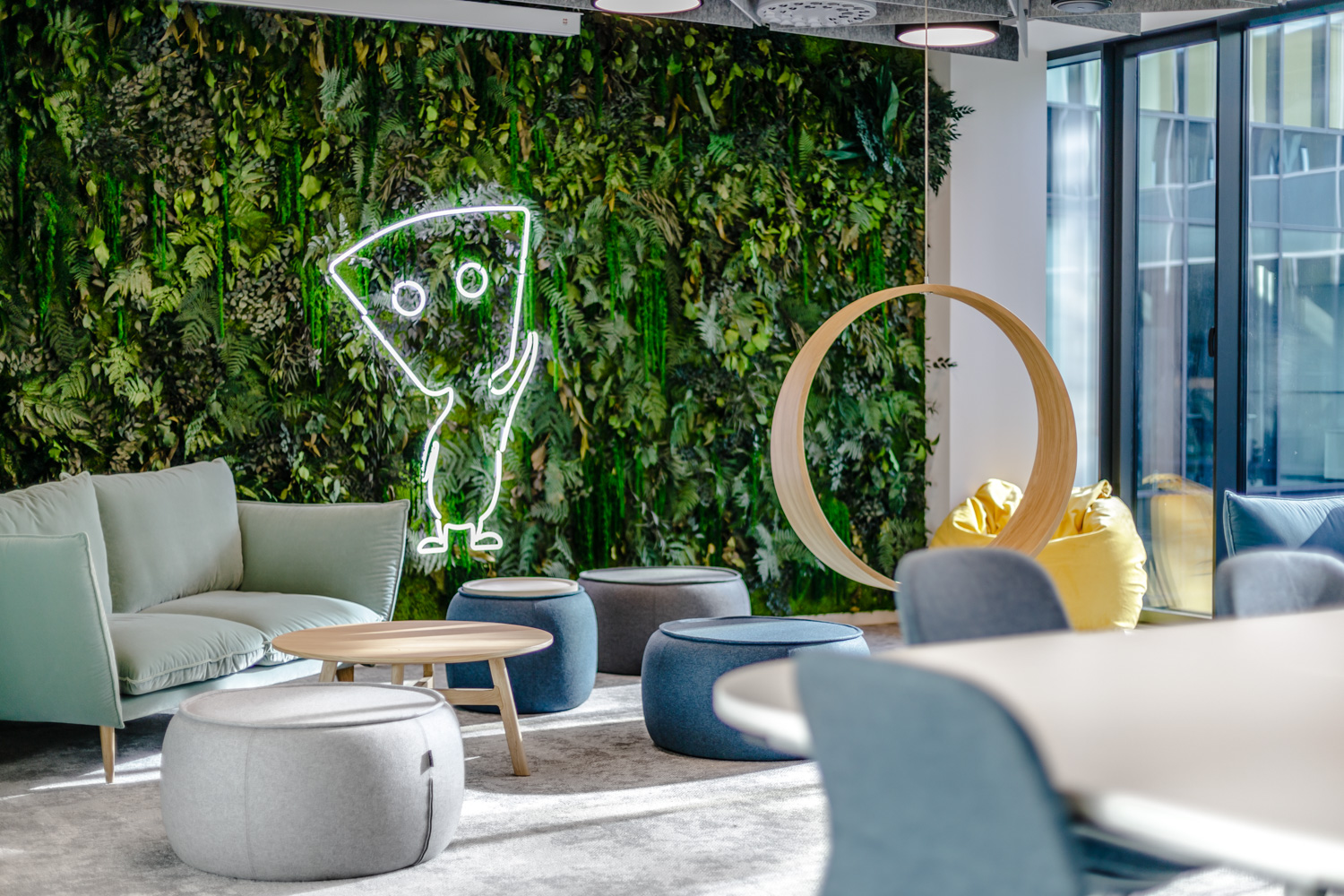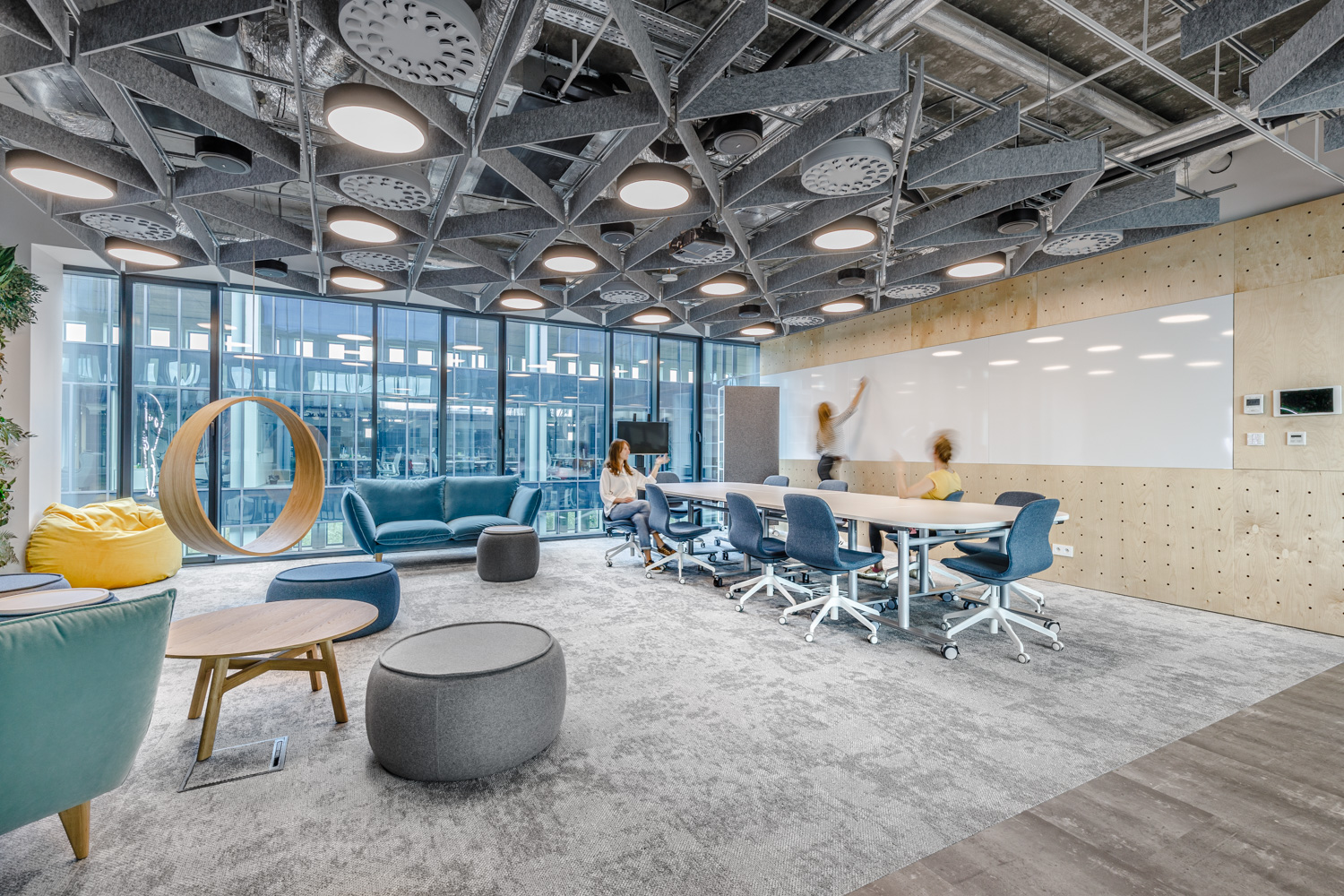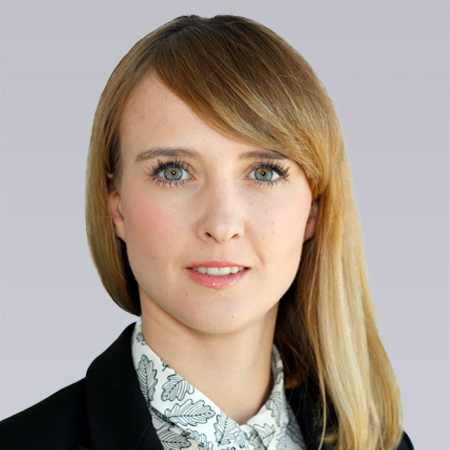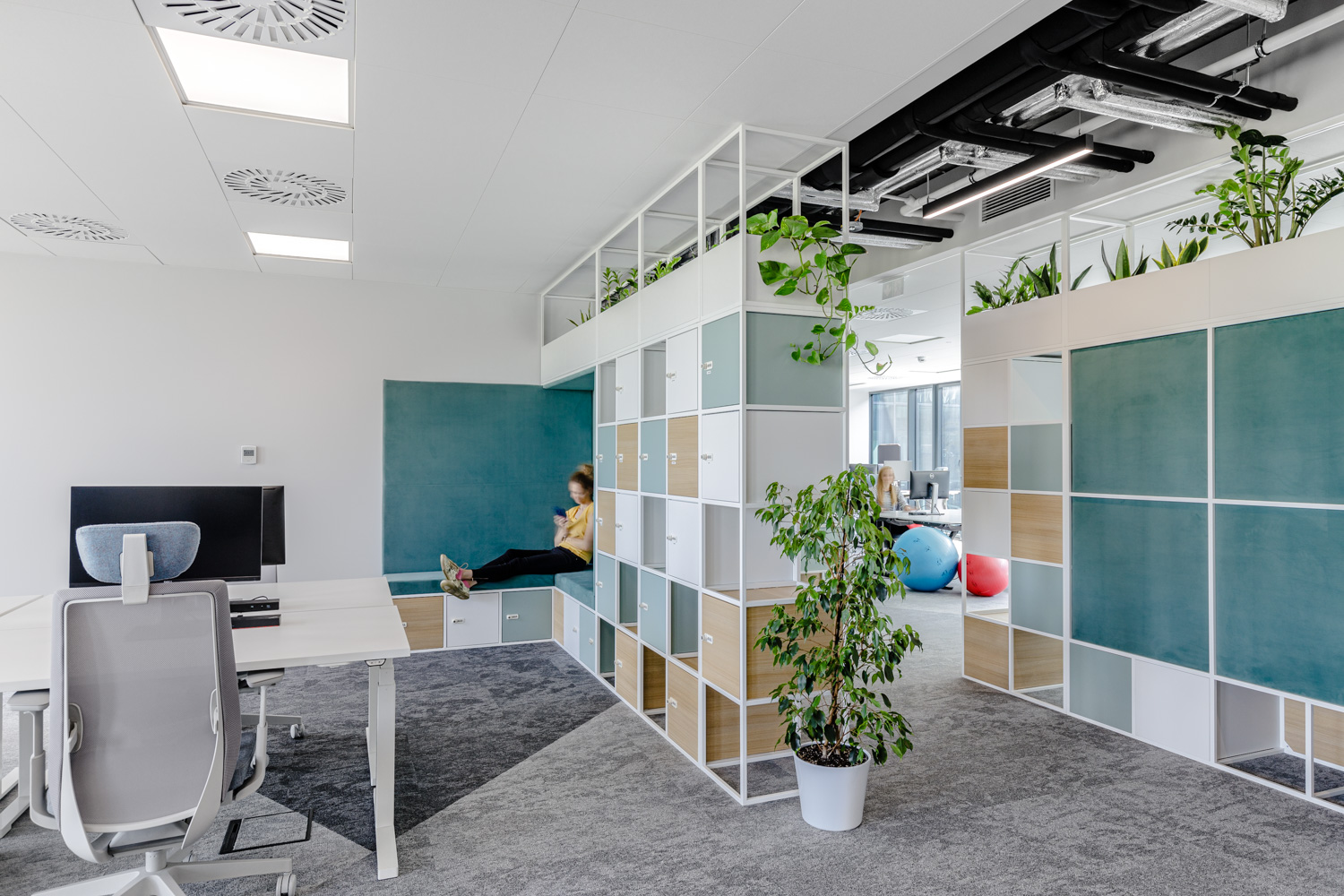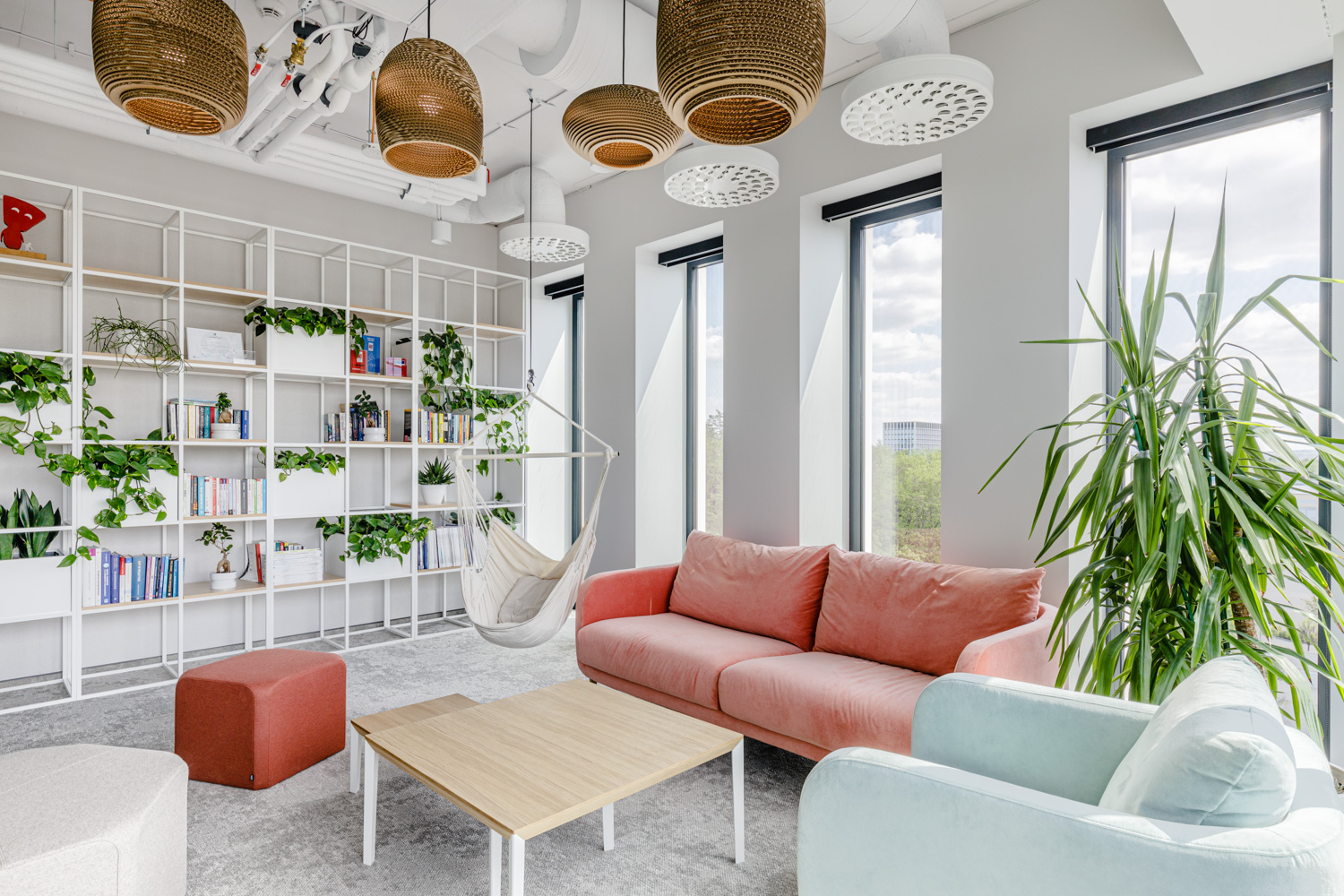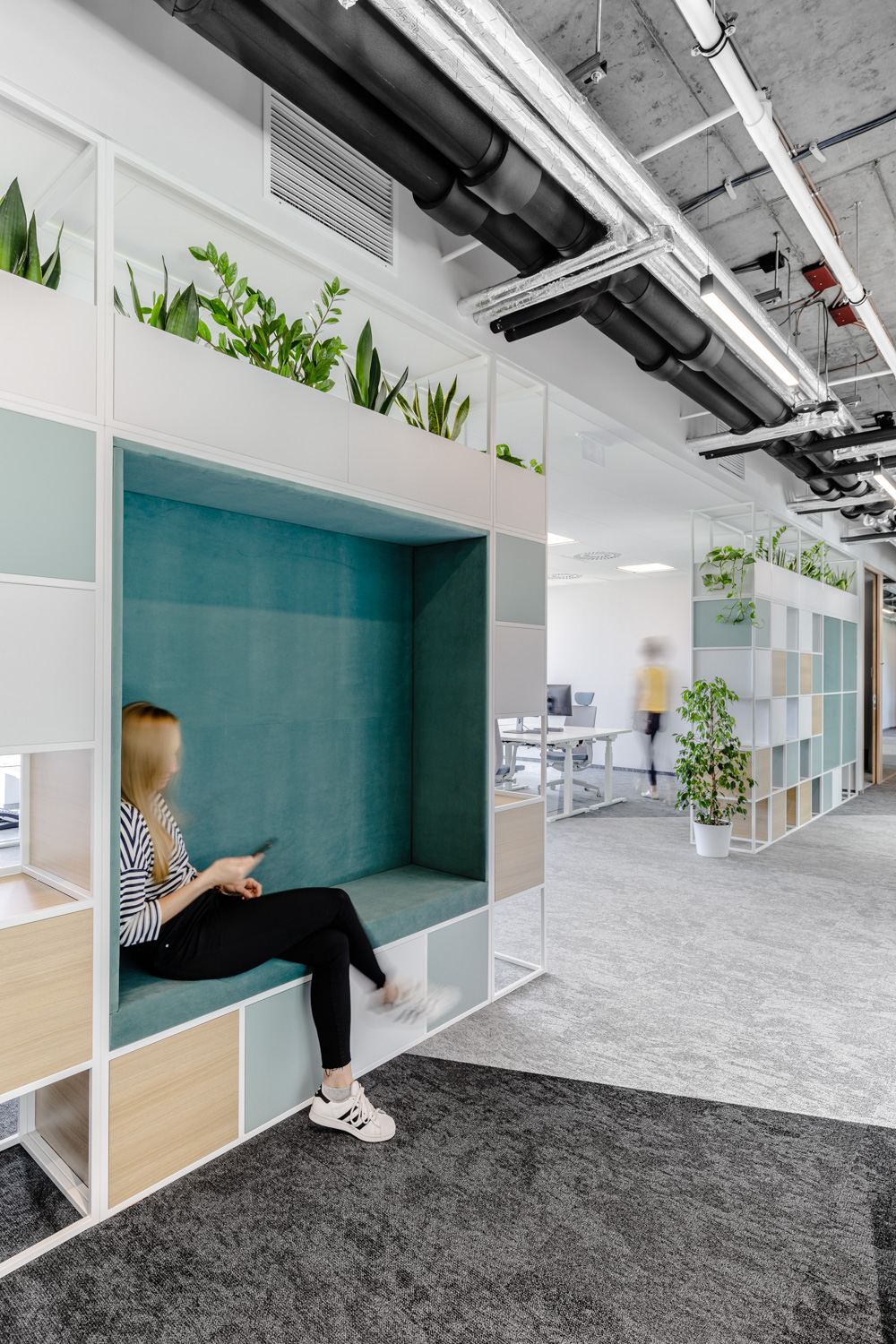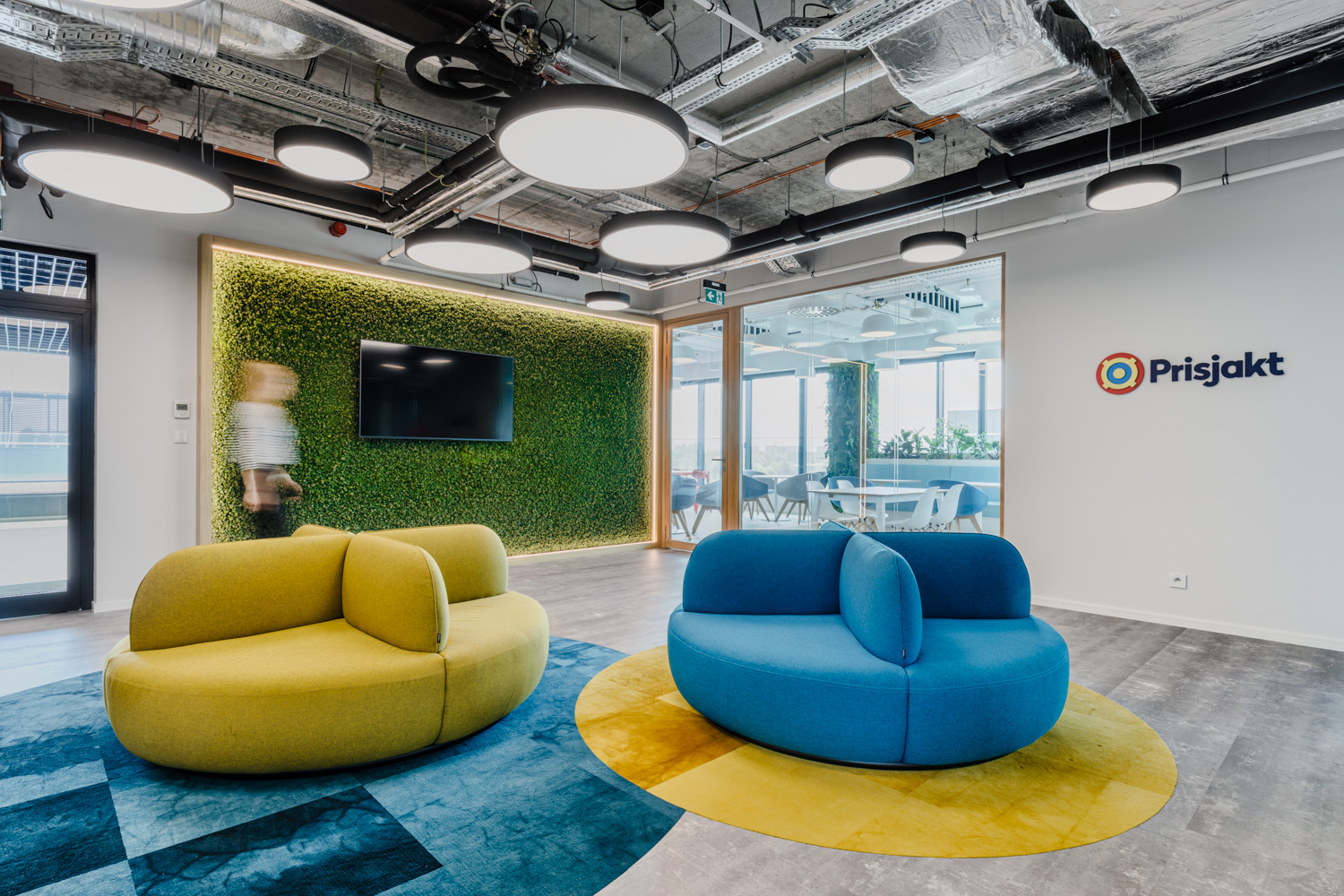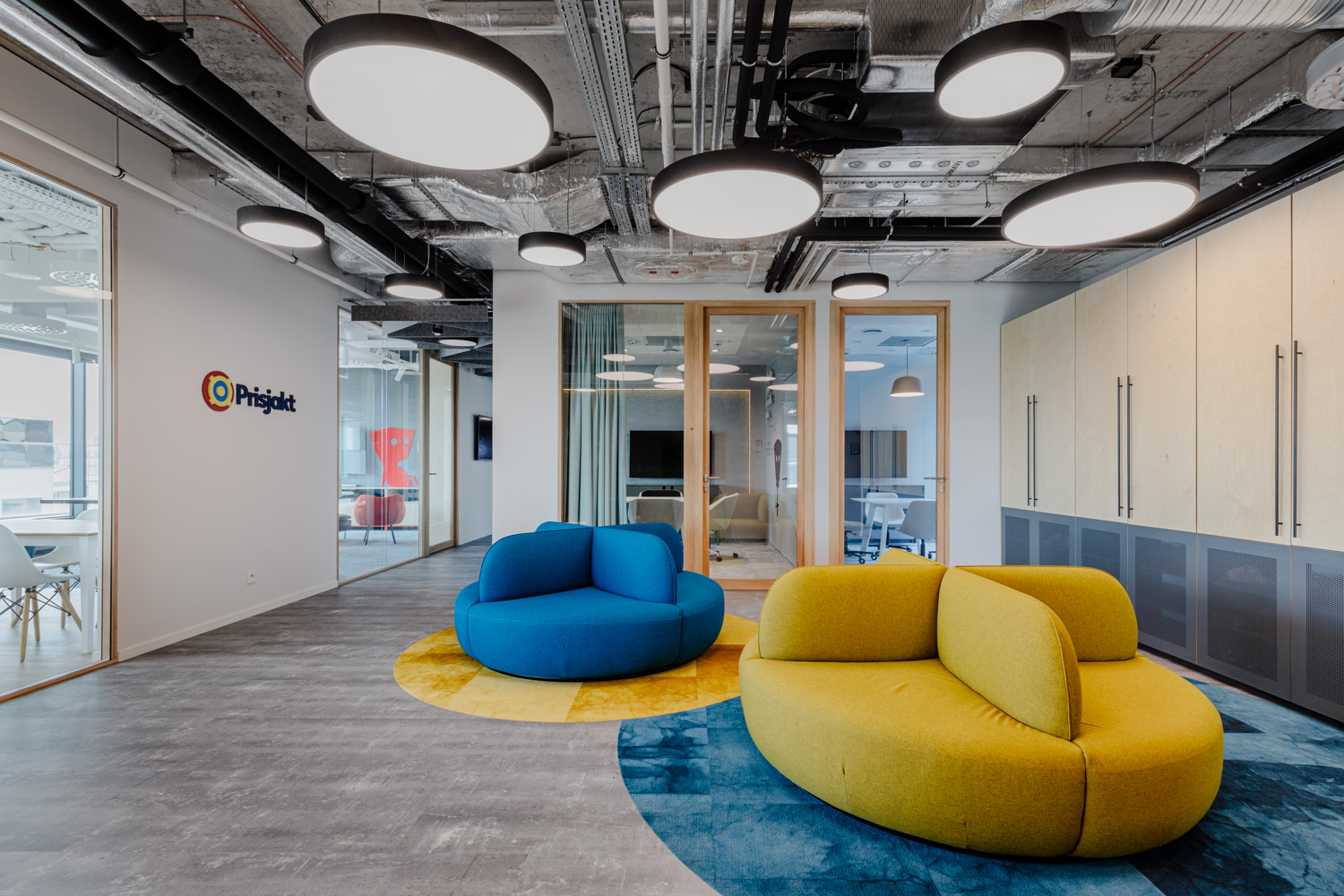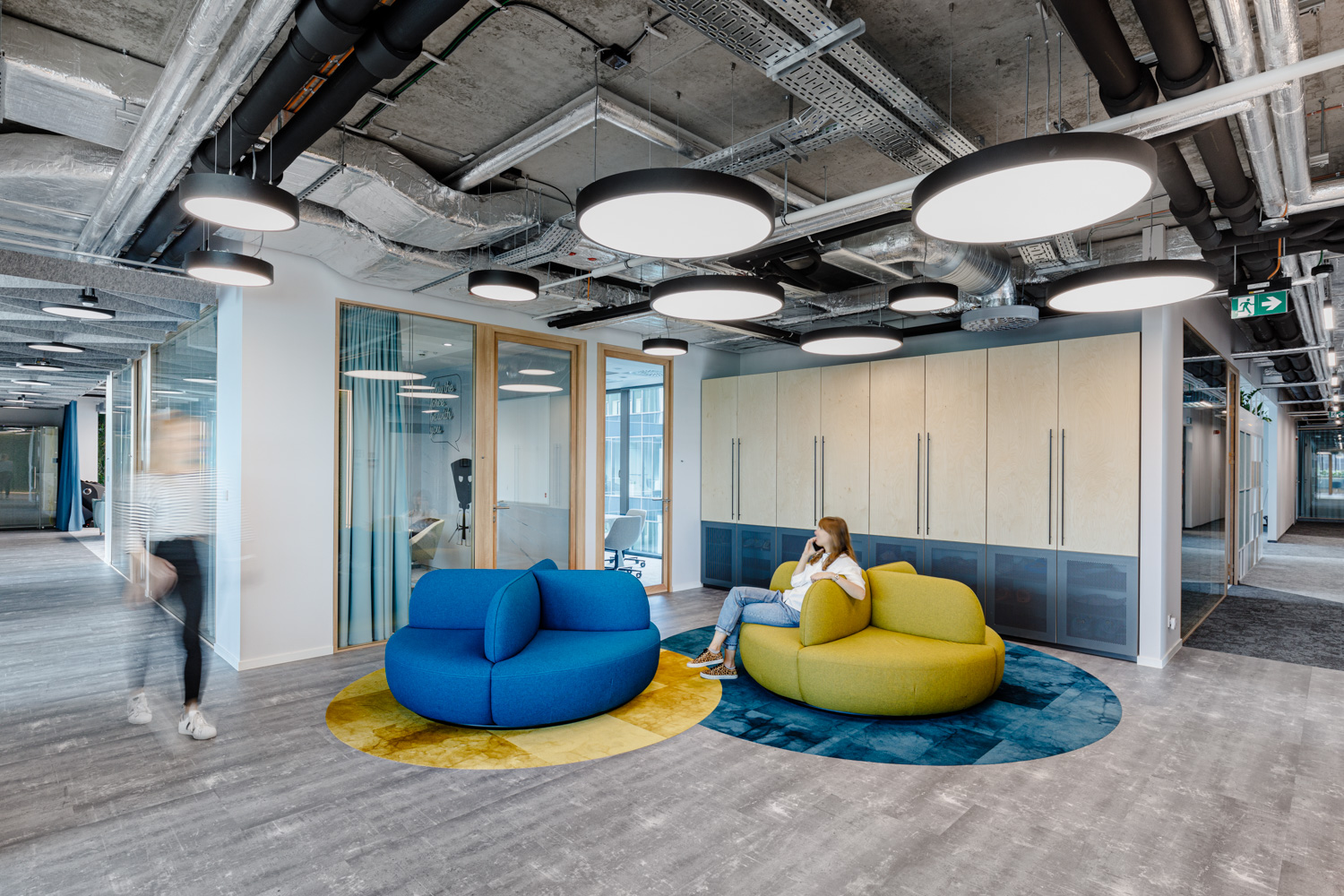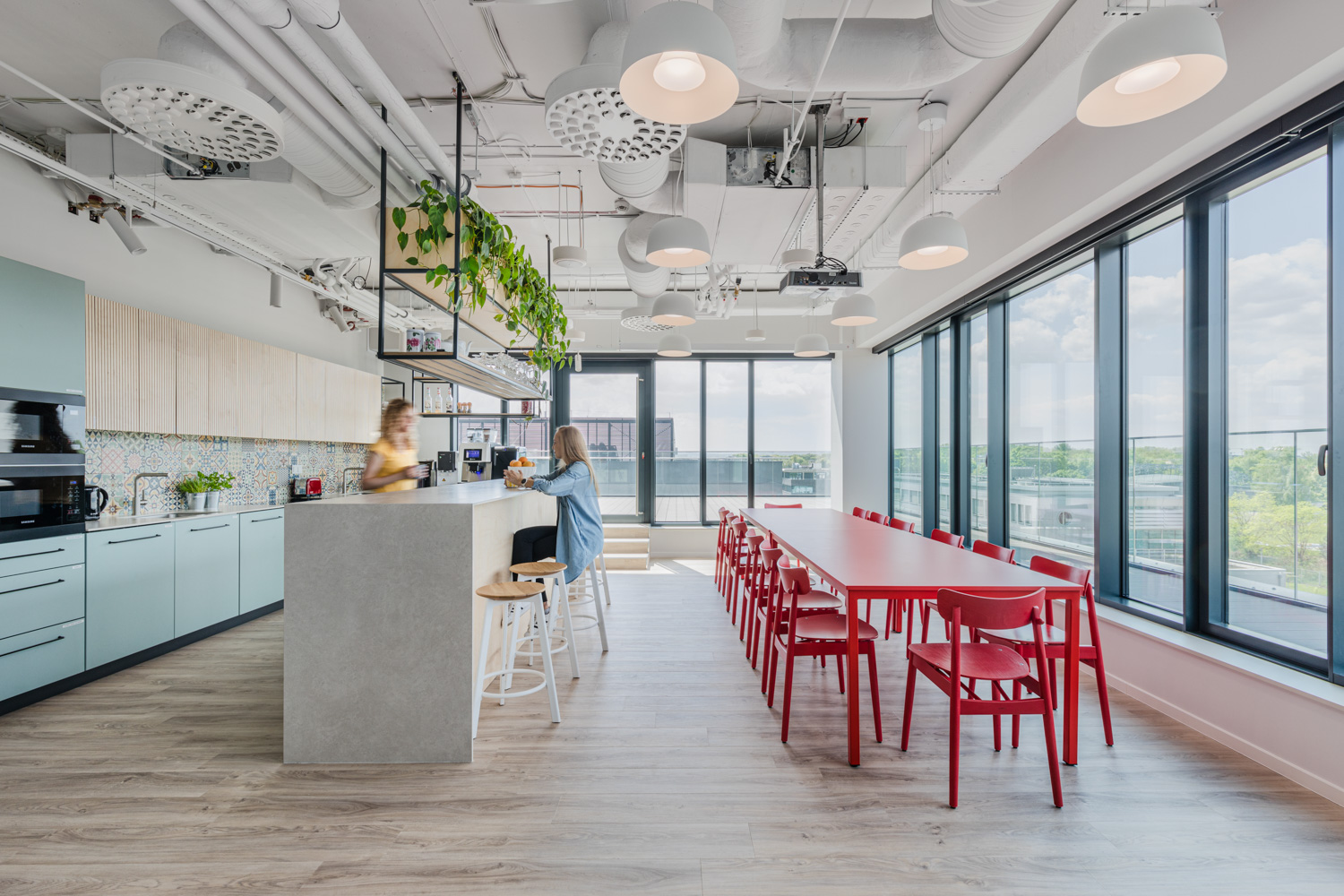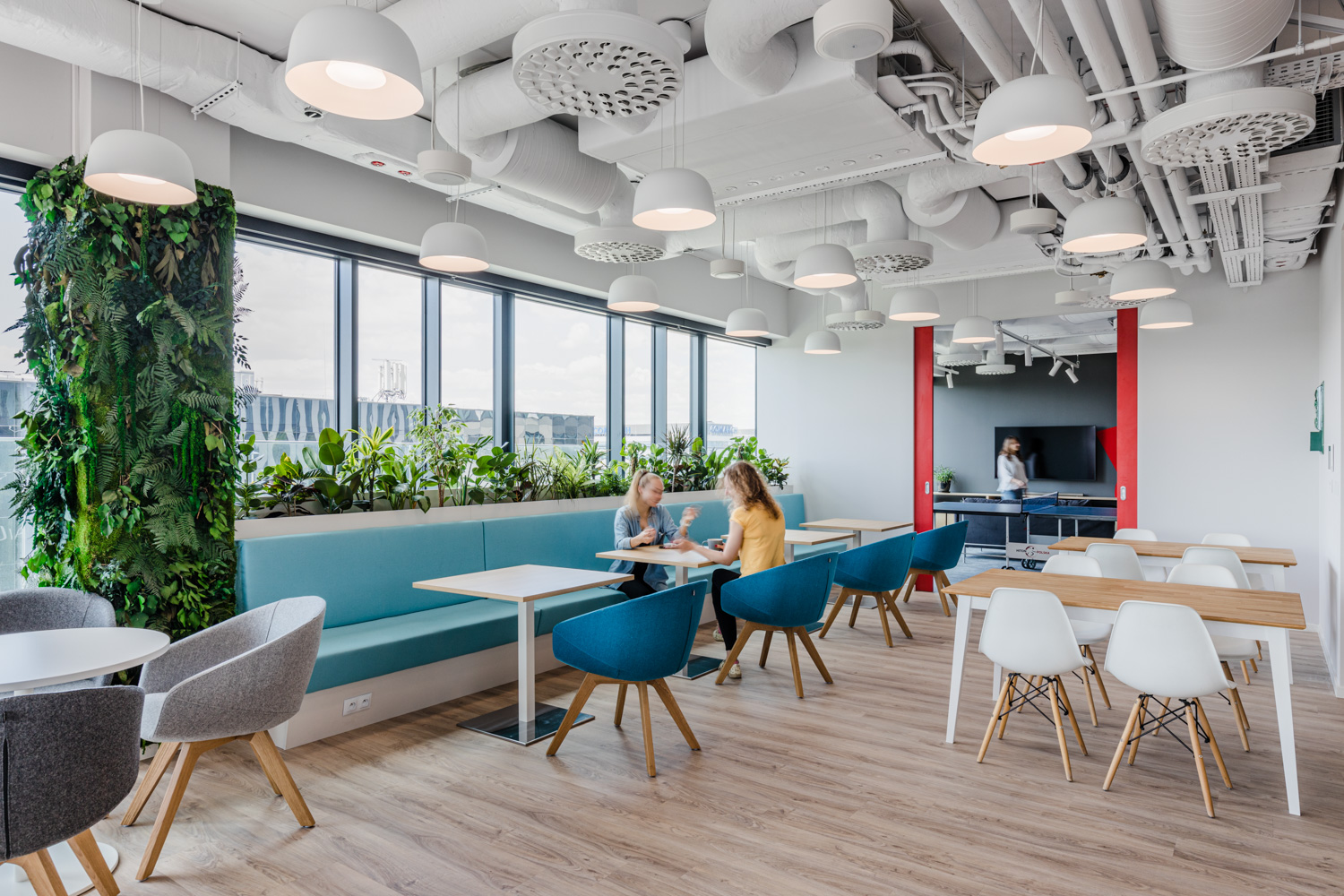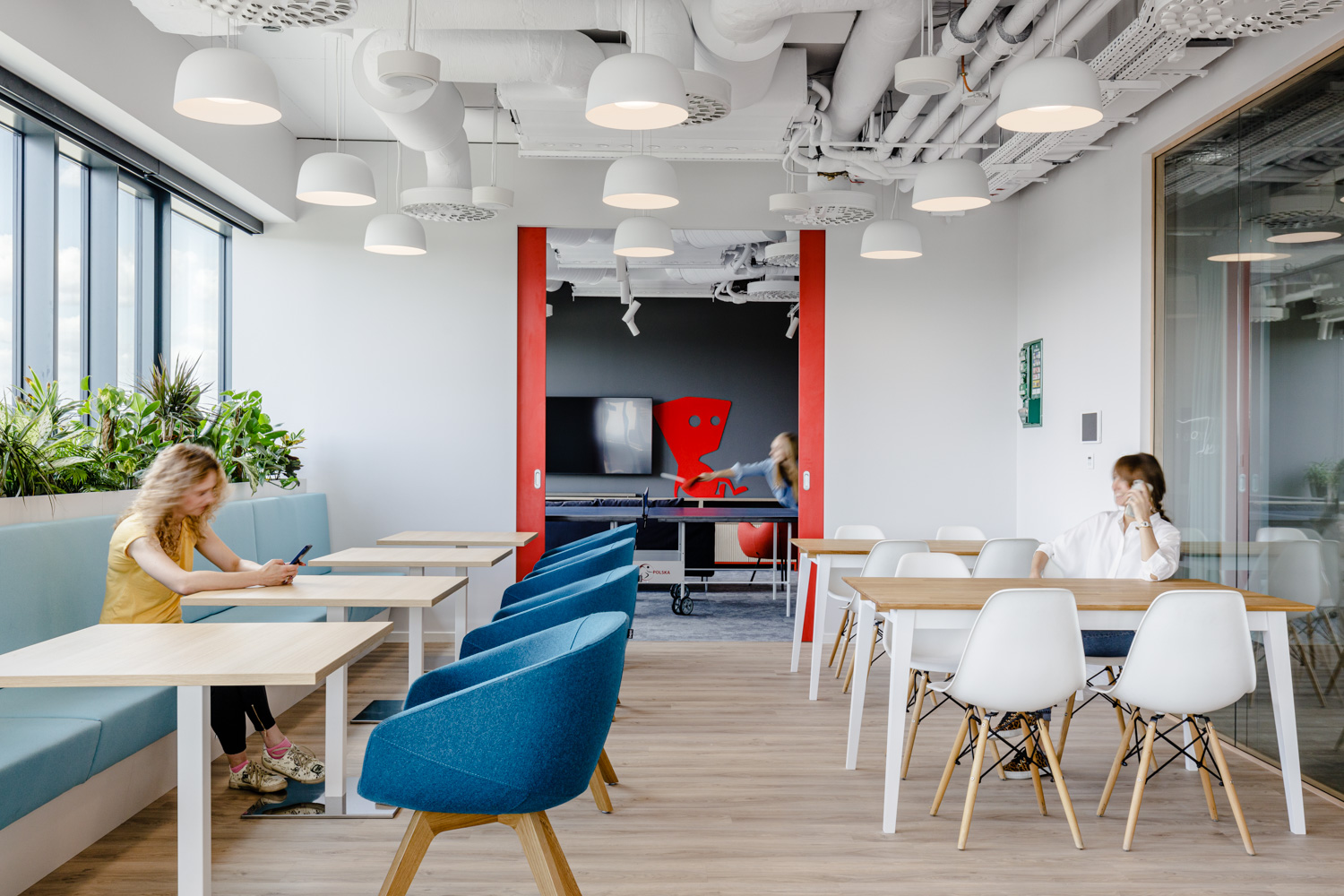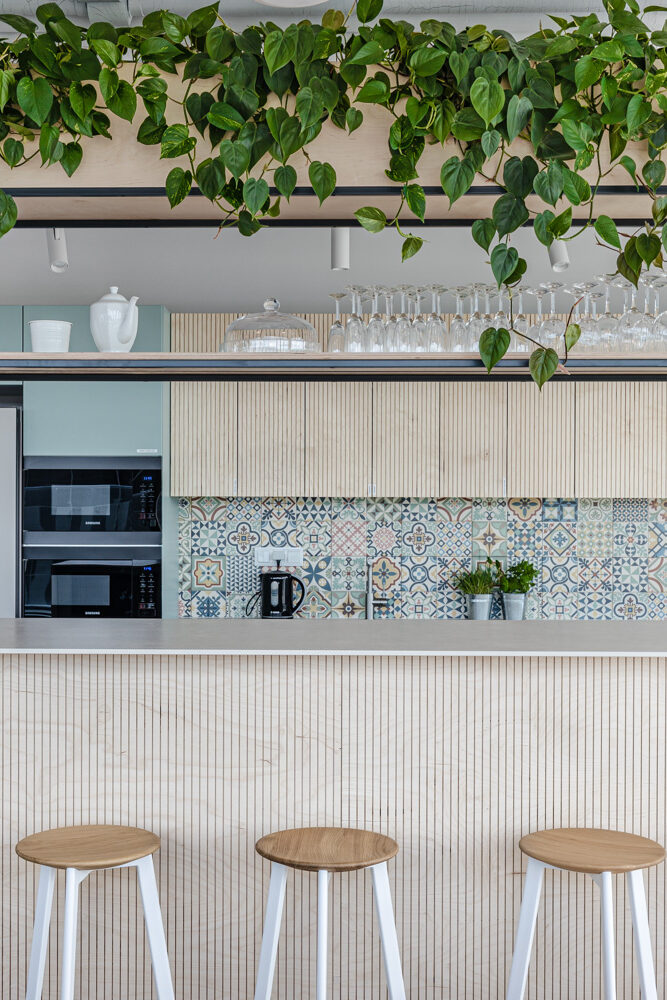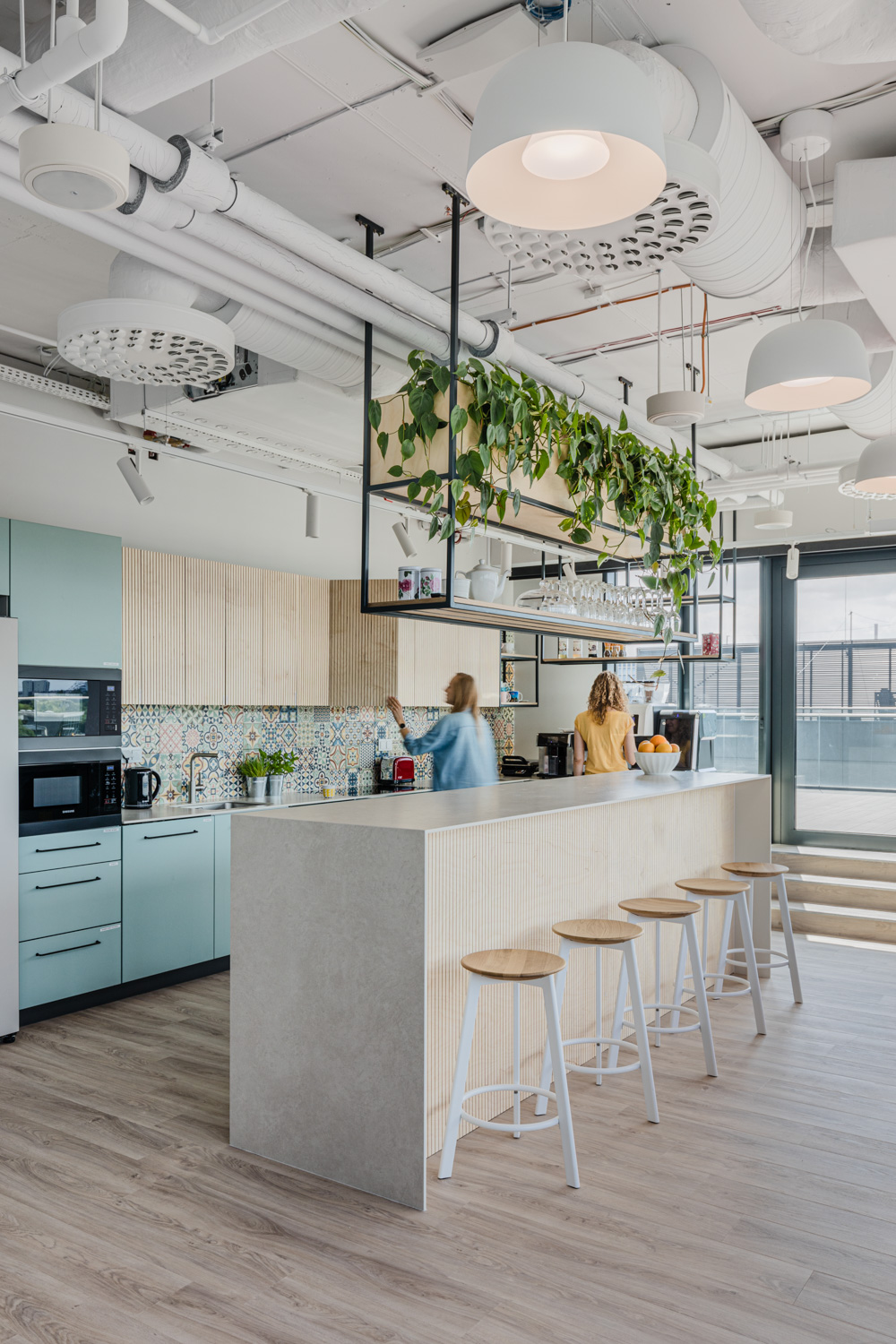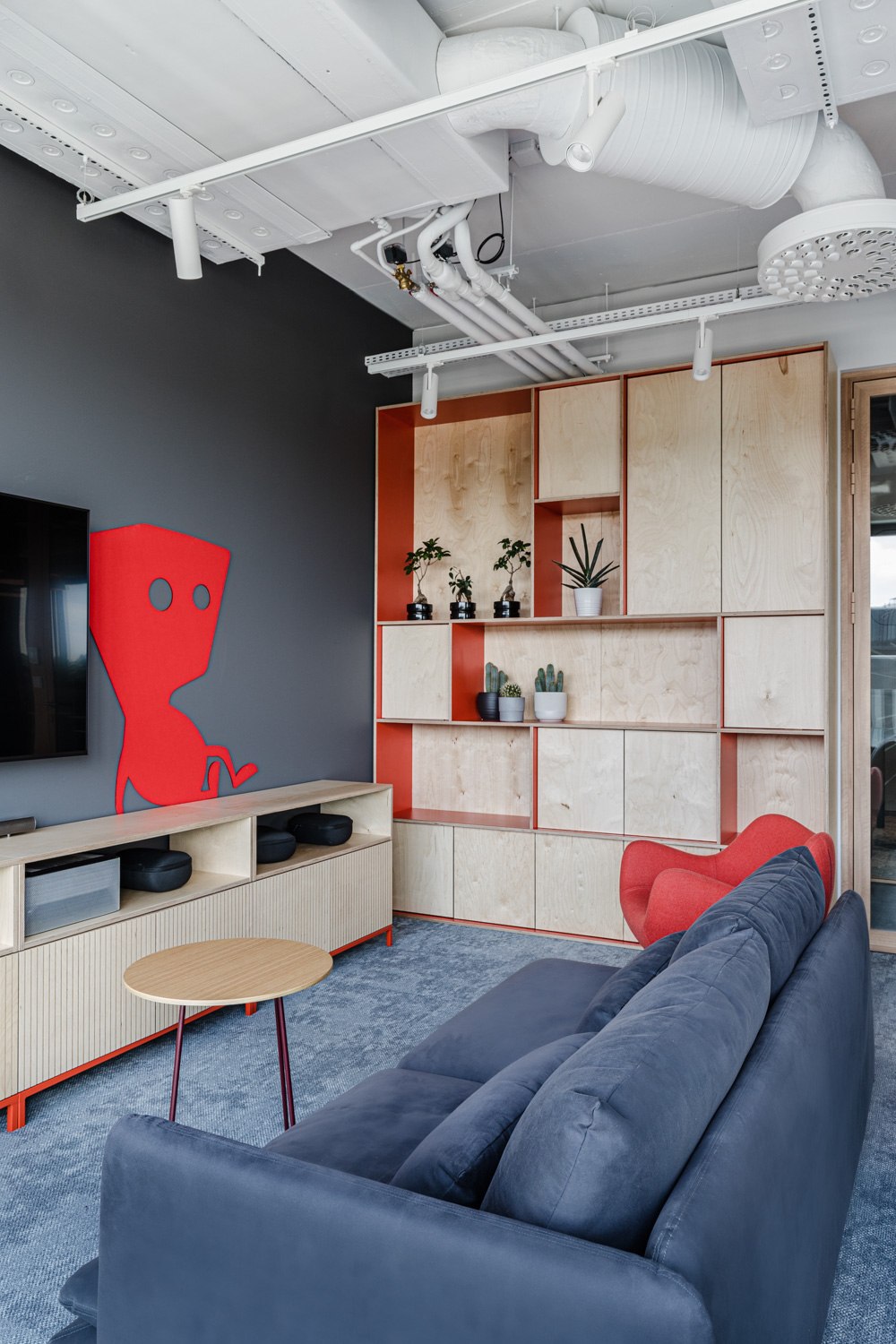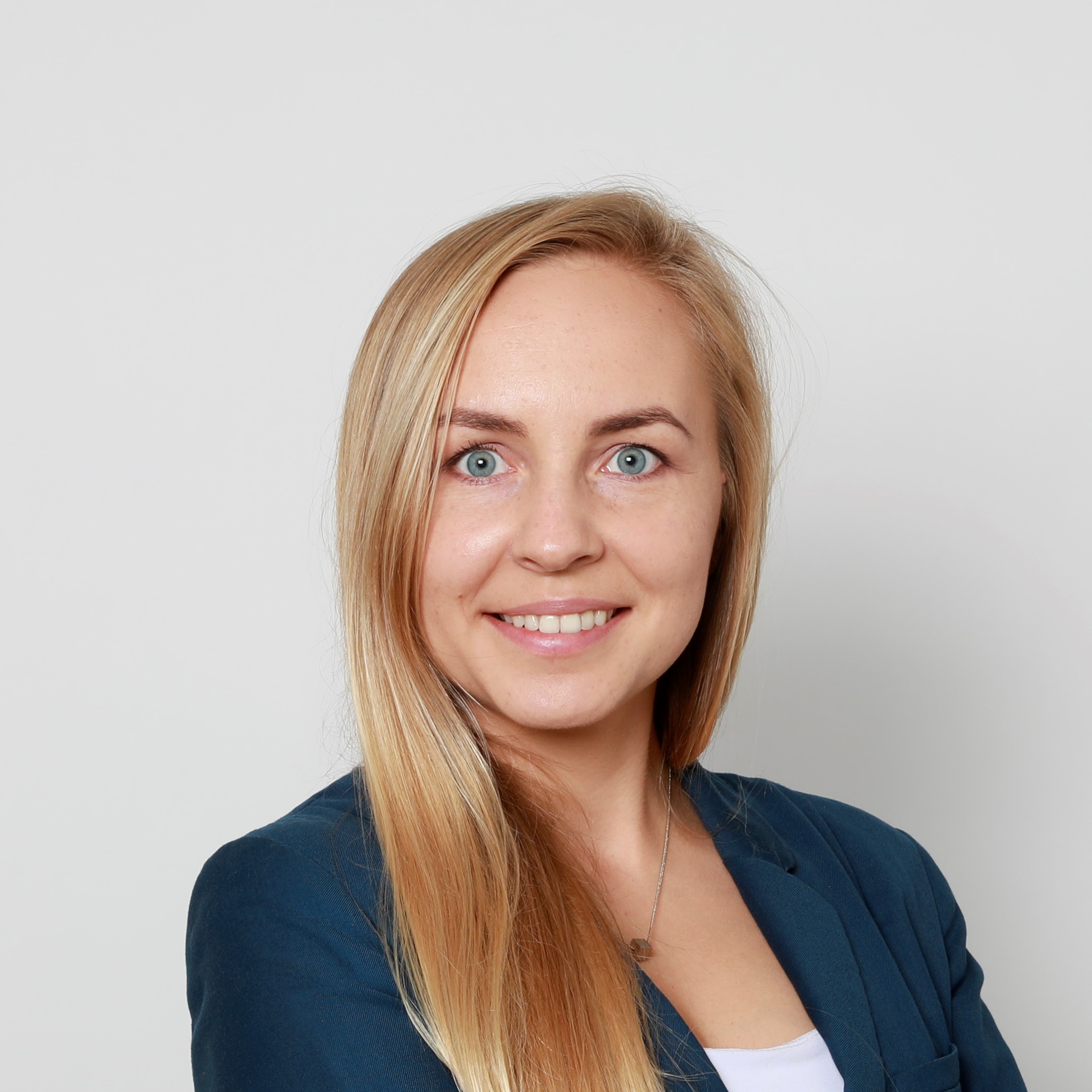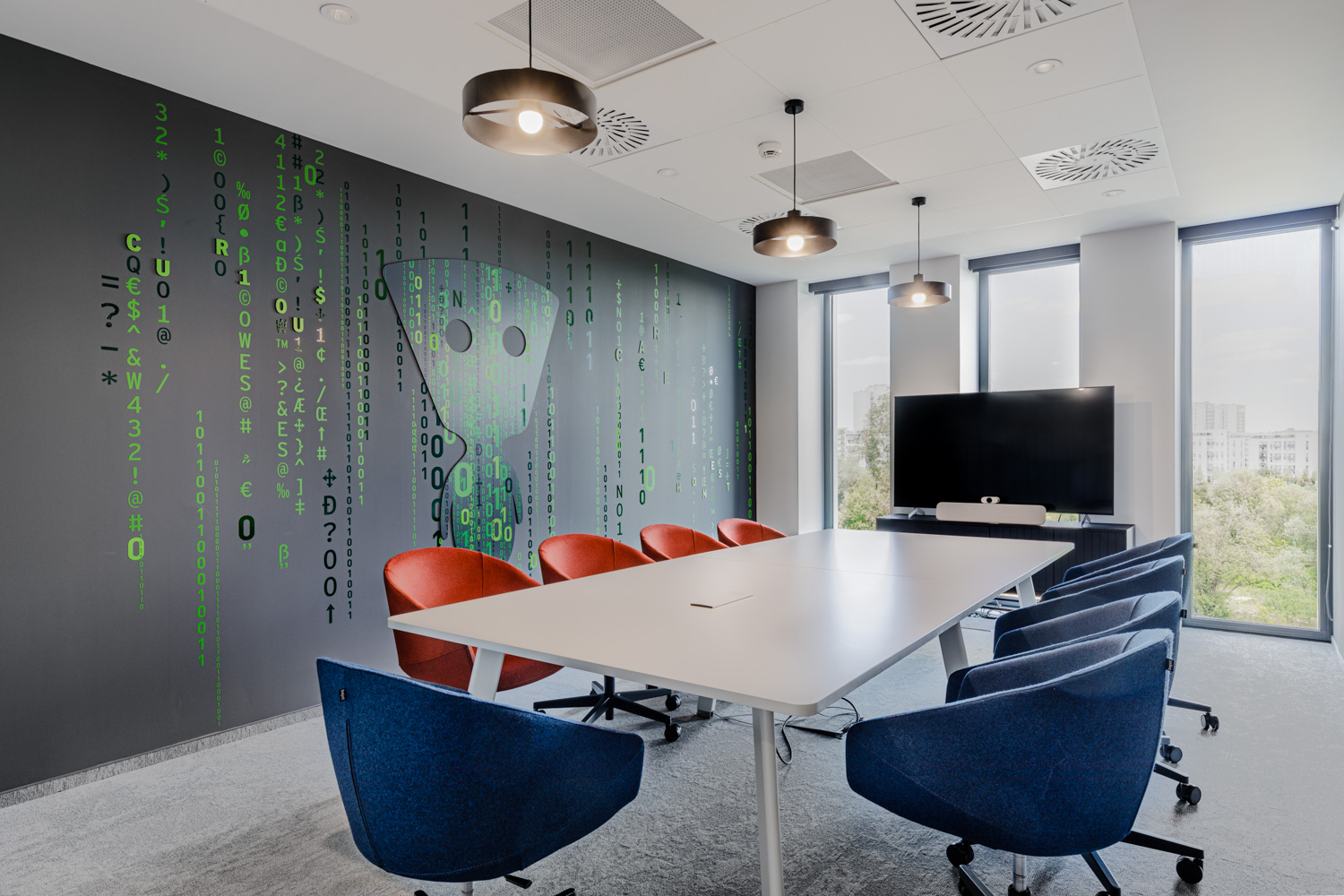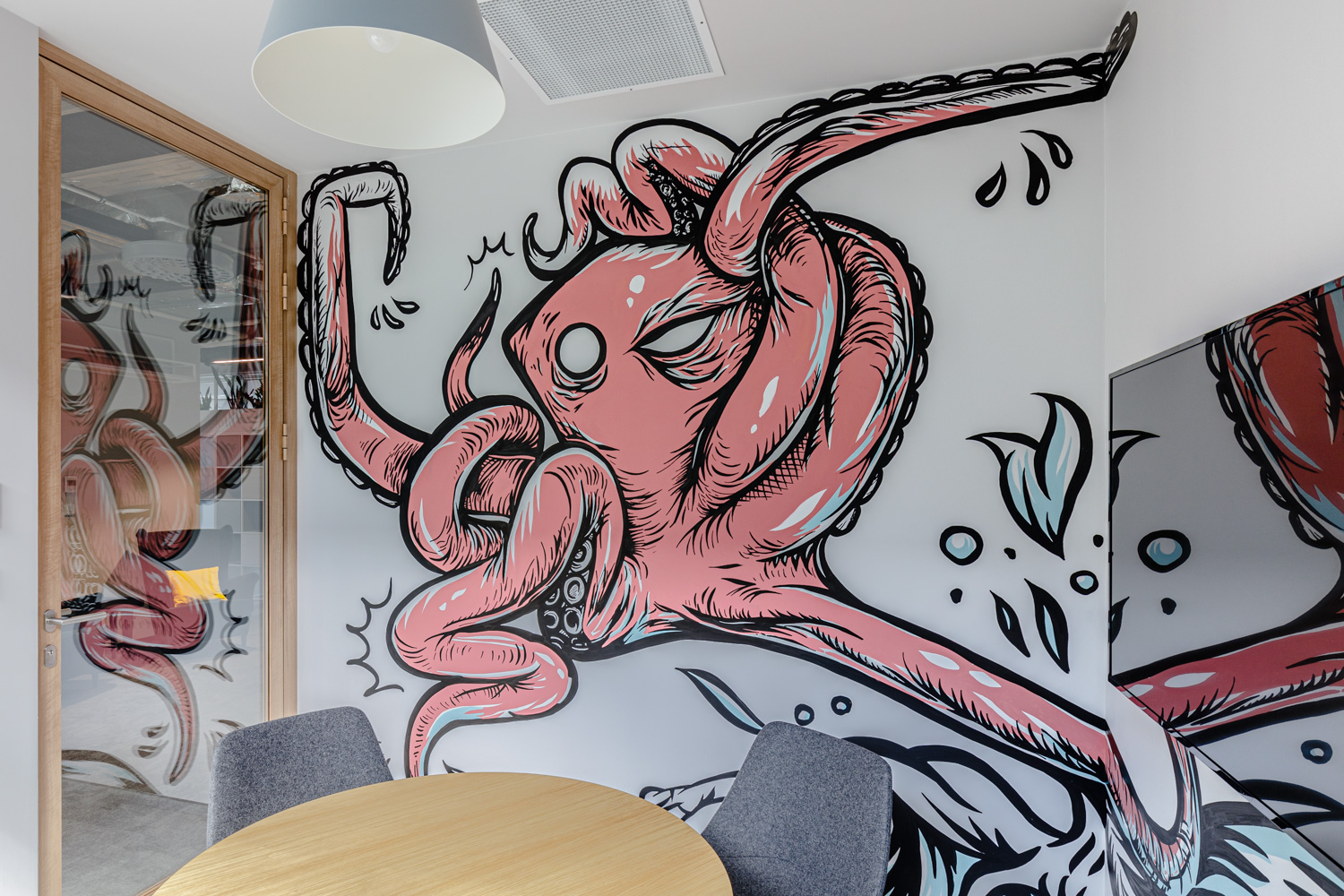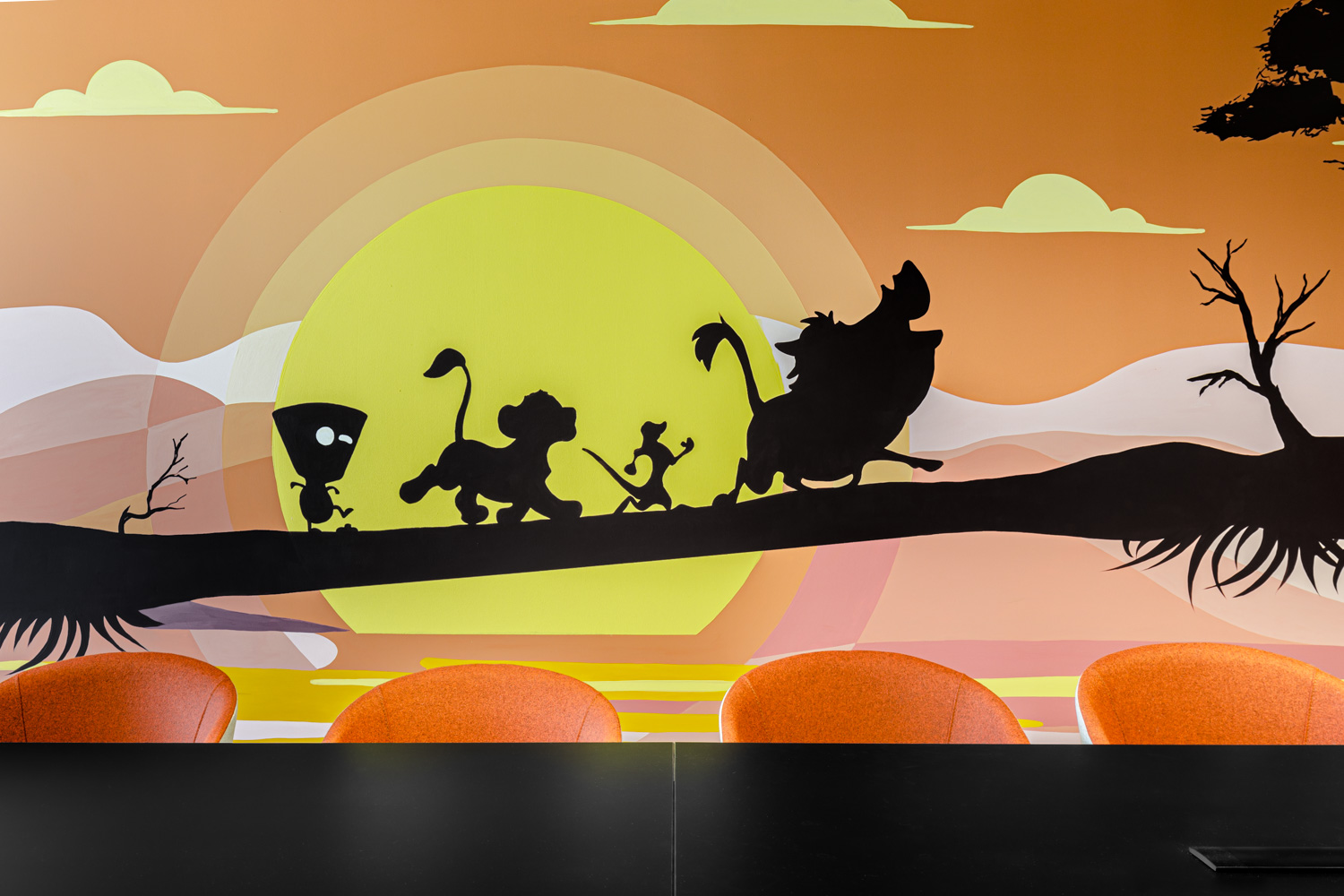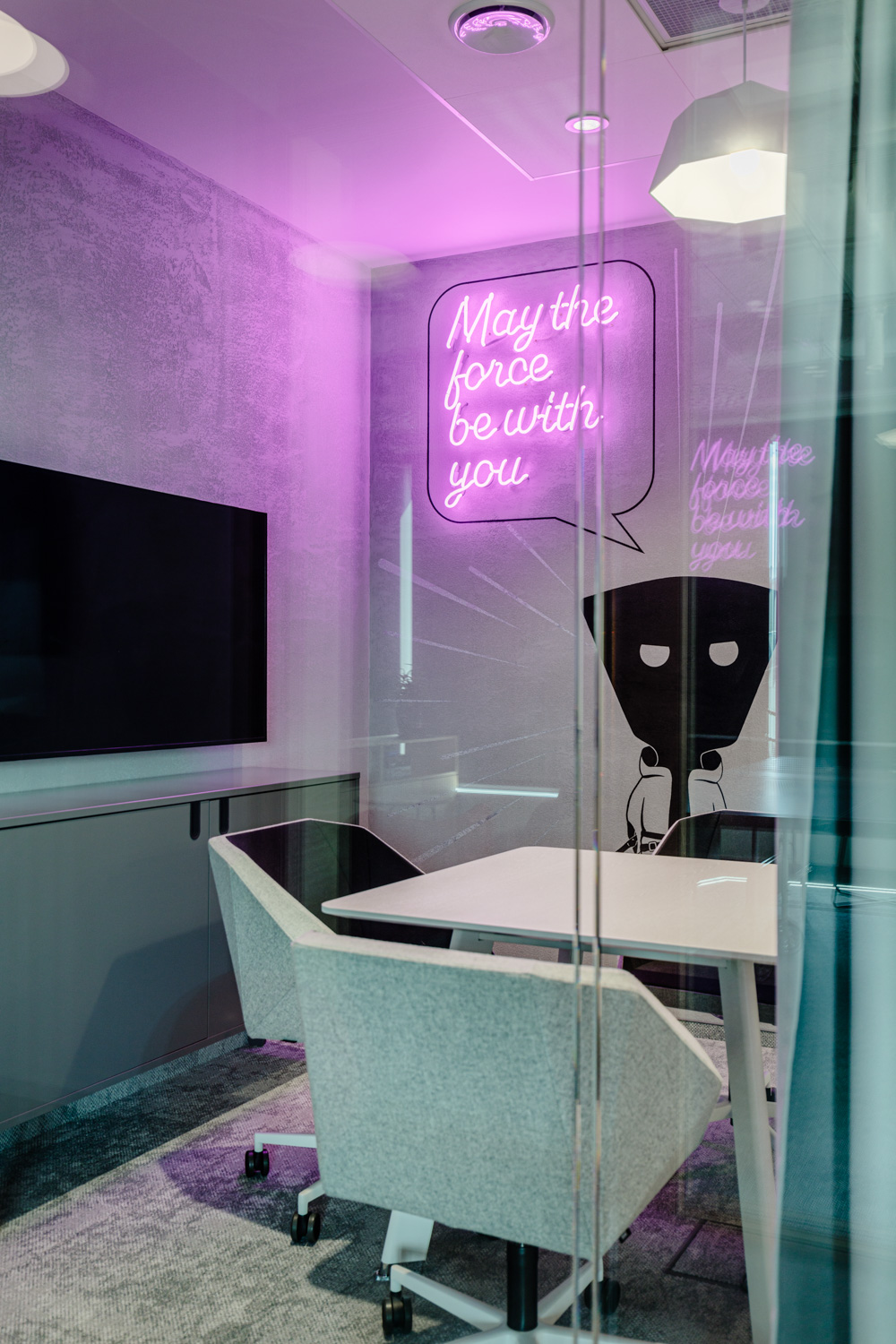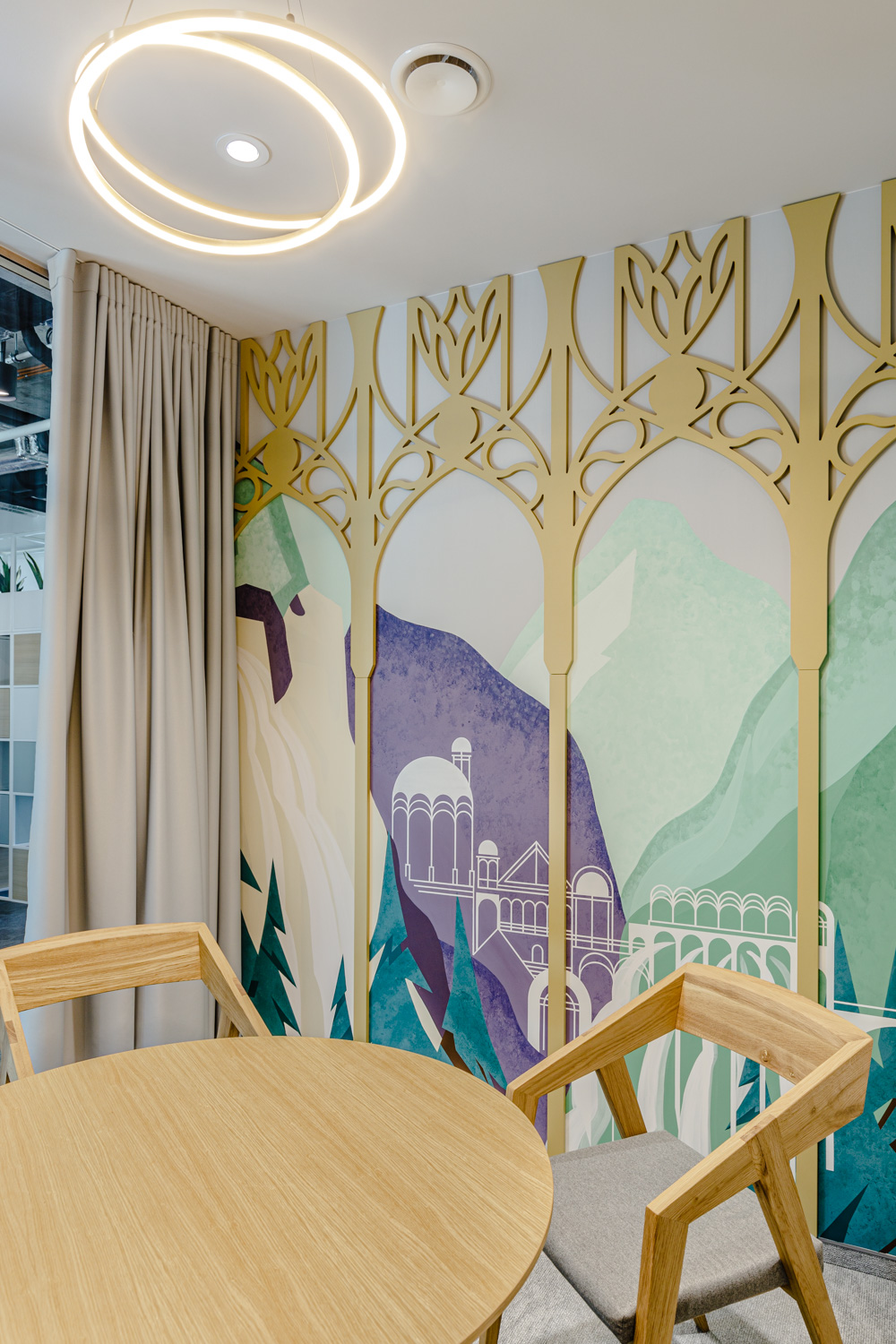Case study: Prisjakt | Open and homely workplace
Changing attitudes towards the concept of an open office and creating a friendly ambiance in line with the organization’s family atmosphere – this is the transformation of Prisjakt’s headquarters.
The integration of two offices located in separate buildings into a unified common space and the implementation of a comfortable and transparent open space layout – these were the main objectives of the work environment redesign at the new Prisjakt office.
Project challenges:
- Combining two diverse office spaces
- Introducing an open office concept and reducing biases caused by previous experiences
- Arranging a welcoming work environment that resonated with the organization’s culture
Client background
Prisjakt is a Swedish company dedicated to professionally helping customers make wise purchasing decisions. The organization was founded in 2002 and currently operates in 5 European cities. Prisjakt’s Cracow headquarters occupies an area of 1242 square meters and is located in the Aquarius building.
Their workplace has a unique, casual character – there is no dresscode, employees walk around the office in slippers, bake cakes in teams and integrate during games. The Client expected the designers to ensure that the office design would reflect the priority of cultivating a sense of community among employees and maintaining an informal, home-like atmosphere.
The problem faced by the organization was the separation of office space into two separate facilities in different buildings. Originally, one office functioned in a corridor-cabinet configuration, while the other was arranged as an open space, but lacked a human component – it was lacking the divisions and supplementary spaces that add variety to the environment.
Challenges
Our team had to face employees’ cautious attitudes toward the open office concept, which were the result of their previous experiences. Those performing their jobs in a closed office layout were apprehensive about the open space concept, while others were worried about the perspective of repeating the mistakes of the previous arrangement.
People from the “closed office” – with an office-corridor layout – were concerned about abandoning their rooms, while those who had previously worked in an open space associated this type of arrangement with noise.
Colliers Define architects, Paulina Palmowska and Agnieszka Ulatowska, were tasked with presenting a solution that would reconcile different needs and work styles and create a climate in line with the company’s culture.
Strategy and design process
The guidelines for the new project were developed jointly with the Client. Our workplace strategy team conducted a process of learning and gradually defining the needs of the space’s users, which included surveys, interviews with team representatives, and workshops with employees and managers.
We guide the Client through the entire project, starting with the identification of needs and priorities, through space design to general construction. We have the resources and competence to do so.
We also organized a meeting with the company’s project group, during which we suggested using a narrative space branding. Our interlocutors reacted optimistically to the idea, but suggested that the foundation of visual communication should be to convey the authentic values of the company’s culture and community of people. By doing so, the environment was supposed to enhance the nurturing of these ideals.
In alignment with the Client’s requests, using the guidelines of the work environment strategy, Colliers Define architects developed the core principles of the arrangement.
Spatial solutions
The key idea was to divide the functional layout into social and individual work zones. Our team proposed intimate open space zones – separated from the corridor, which meanders through the space and creates an arrangement of cozy nooks.
The workstations are located on the quiet side with a view of the greenery, while the meeting areas are situated close to the street.
A peculiarity of the office, compared to traditional standards, is the absence of a reception desk. This is due to the internal nature of the cooperation – no external Clients visit the headquarters. Instead, there is a concentration of guest lounges and creative rooms for team work near the entrance area.
Another idea was to use a large common table as the centerpiece of the kitchen – and thus the heart of the office’s social life. The idea was to unite people and encourage them to meet and cook together.
Next to the kitchen there is a game room – the rooms are separated, but the zones connect, which contributes to nurturing interpersonal relationships. The kitchen is also adjacent to the terrace – it is possible to go outside at any time.
The terrace merges with the kitchen. A chillout zone is located next to it – a room that is combined with a mother and child’s room, which intentionally has no exit to the outside so as not to generate noise. The creative zone has soft seating, design tables and whiteboards dedicated to the entire team.
Design and storytelling
At Prisjakt’s Cracow headquarters, we also introduced brand storytelling, which was formulated based on two elements. First, those responsible for space branding smuggled in the IO – Prisjakt’s brand hero.
The second component was a movies motif – cinematography is an important aspect of the organization’s culture, so the Client wanted this to be the guiding theme. The architects interpreted this as simplistic, non-literal, and the graphic designers turned the concept into a quality design.
The basis of the arrangement was a bright Scandinavian design, relating to the biophilic trend. The aesthetic was underpinned by the use of a lot of wood and an emphasis on naturalness and coziness, which we balanced with accents of more intense colors, inspired by the brandbook. There are also many elements of greenery. As a result, the interior is perceived as friendly and open to people.
New reality
The newly arranged space allows to organize brainstorming, focus on individual tasks, socialize or just relax – depending on current needs. The final realization captures the most important aspects of the organization’s culture and atmosphere – there is a balance between integration and care for the well-being and each employee’s personal space.
